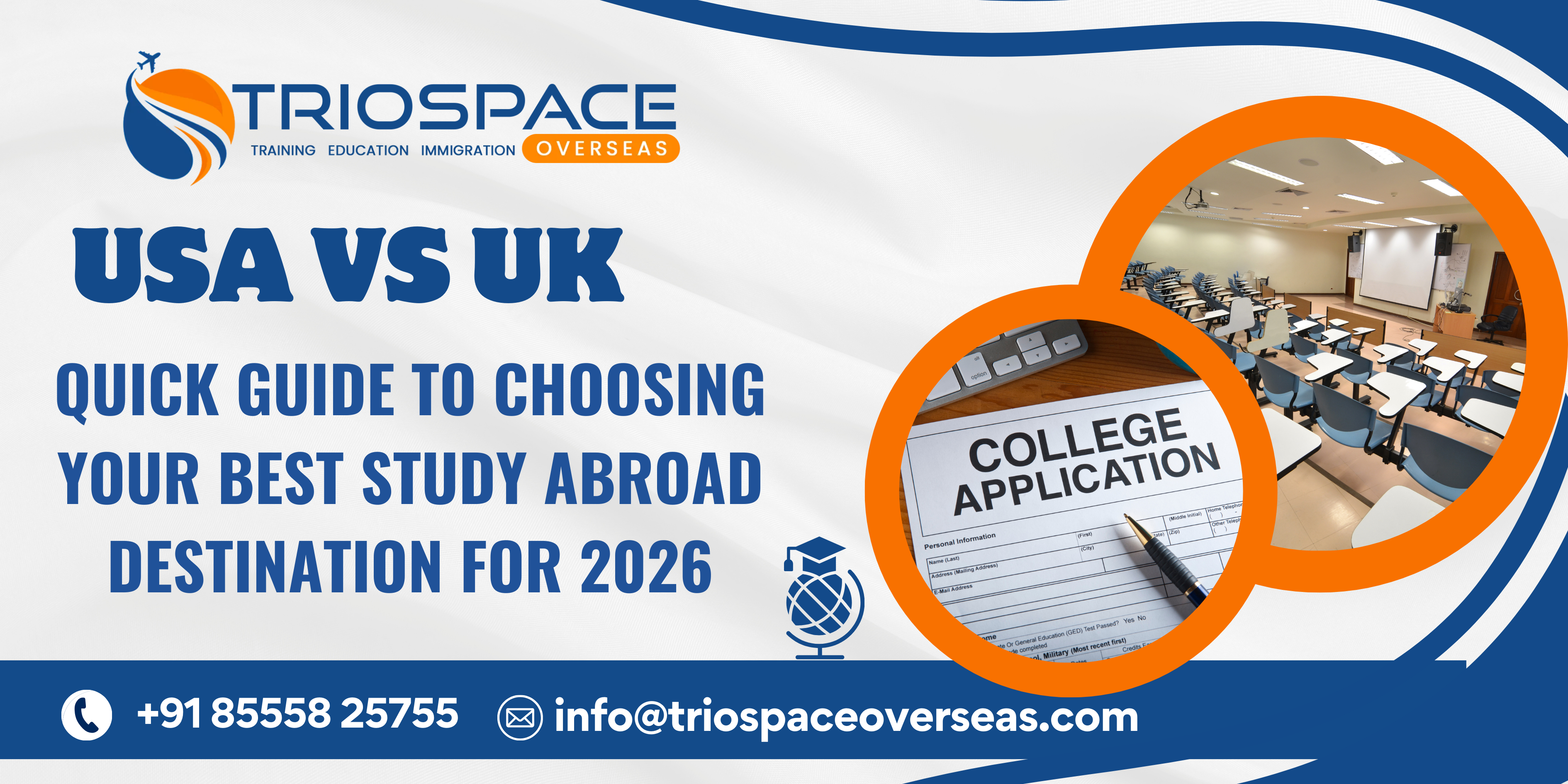
Study Abroad Costs: Your Ultimate Guide to Affordable Living & Accommodation
Table of Content
ToggleReal Cost Of Studying Abroad, Hidden Expenses
Embarking on a study abroad journey is an exciting prospect, but it comes with a financial reality that extends far beyond just tuition fees. Understanding the real study abroad cost is essential for any international student planning their education overseas. Students often focus solely on the cost of their academic program, similar to how one might consider only the foundation when building a house. However, a complete grasp of international student living expenses requires accounting for all the “walls, roof, and furniture” that make up daily life in a new country.
However, a complete understanding of study abroad expenses requires accounting for all the “walls, roof, and furniture” that make up daily life in a new country. Key expenses include accommodation, food, local transportation, health insurance, academic materials like books and supplies, and personal spending for entertainment and incidentals.
These additional costs can accumulate rapidly, sometimes even rivaling the tuition itself, creating what can be described as a “hidden iceberg” of expenses.
For instance, a semester abroad arranged through a third-party provider might range from $15,000 to $22,000, often bundling housing and some meals into the program fee. Conversely, direct enrollment in a foreign university can offer significantly lower tuition, with costs ranging from a few hundred dollars in countries like Germany and Sweden to over $10,000 in Australia and New Zealand.
However, choosing direct enrollment means the student is then responsible for independently managing and budgeting for all other living expenses.
The common tendency for universities to emphasize only tuition fees can make study abroad appear more financially accessible, potentially leading students to underestimate the true financial commitment.
This underestimation can result in significant financial stress, a compromised experience due to budget constraints, or even early withdrawal from the program. Therefore, a comprehensive and realistic financial plan that accounts for all categories of spending, along with a buffer for unforeseen circumstances, is crucial for a successful and less stressful experience abroad.
Country-by-Country Cost Snapshot
The financial landscape for international students varies dramatically depending on the chosen country and even the specific city within that country. For example, living in major urban centers like New York or San Francisco is considerably more expensive than residing in a smaller college town such as Gainesville, Florida. This significant variation in living costs highlights a key strategic consideration: the choice of study destination can be a primary lever for managing overall expenses.
By consciously selecting a country or city with a lower cost of living index, students can substantially reduce their financial burden before they even begin their studies.
This strategic decision can free up funds for other experiences or lessen the need for extensive loans, making study abroad a more attainable goal. Researching and comparing these cost differences early in the decision-making process is a powerful budgeting strategy that empowers students to make informed choices that align with their financial situation.
The following table provides a general overview of average monthly costs in popular study destinations, offering a snapshot for comparison.
| Sn.no | Country/Re gion | Accommod (Monthly) | Food (Monthly) | Transportat (Monthly) | Health Insurance (Annual) | Miscellane ous (Monthly) | Overall Monthly (approx.) |
| 1 | USA | $700 – $3,500 (varies by city/type) | $250 – $600 | $30 – $150 | $700 – $1,100 | $200 – $400 | $900 – $4,000+ |
| 2 | UK | £400 – £1,200 | £150 – £250 | £50 – £100 | Free (with IHS) | £200 – £400 | £800 – £2,000+ |
| 3 | Australia | AUD 400 – AUD 1,500 | AUD 150 – AUD 300 | AUD 50 – AUD 150 | AUD 500 – AUD 700 | AUD 200 – AUD 400 | AUD 800 – AUD 2,500+ |
| 4 | Germany | €300 – €1,500 (shared to private city apt) | €150 – €250 | €0 – €100 (semester ticket often incl.) | €80 – €120 (monthly) | €100 – €300 | €800 – €1,500+ |
| 5 | Canada | CAD 600 – CAD 1,500 | CAD 200 – CAD 300 | CAD 80 – CAD 150 | CAD 600 – CAD 900 | CAD 150 – CAD 300 | CAD 1,200 – CAD 2,500+ |
| 6 | France | $1,300 – $1,900 (with rent) | Not specified | Not specified | Not specified | Not specified | Not specified |
Note: Currency conversions are approximate and based on general rates at the time of data collection. Always check current exchange rates.)
Affordable Accommodation Abroad, Student Housing Options
Choosing the right accommodation is one of the most significant financial decisions an international student will make, impacting not only their budget but also their overall lifestyle and experience abroad.
On-Campus vs Off-Campus: What’s More Affordable?
Students typically face a choice between on-campus housing, usually dormitories or university-managed residences, and various off-campus options, such as private apartments, shared flats, or homestays. Each choice presents a unique set of advantages and disadvantages related to cost, convenience, social life, and privacy.
On-campus housing
On-campus housing in the US can range from $9,500 to $15,000 per year, often including utilities like water and electricity, and sometimes even meal plans. The benefits of living on campus are substantial: it offers unparalleled convenience for classes and university facilities, is generally considered a safer environment, and provides an excellent opportunity to meet new people and build a strong community.
This option is often ideal for freshmen or students who are new to the country, as it offers a smoother transition with readily available support. However, on-campus living typically comes with less privacy due to shared rooms, more rules (like quiet hours and visitor limits), and limited flexibility regarding meal plans or cooking options.
Off-campus housing
Off-campus housing, while offering more freedom and independence, presents a different financial and lifestyle picture. Costs vary widely, from $6,000-$9,000 per academic year in the US for off-campus options, but these figures usually do not include utilities. A shared apartment might cost around $450 per month, while a private one-bedroom apartment in an urban US state could be as high as $3,500 per month.
The advantages include greater privacy, flexibility in choosing roommates and daily routines, and potentially access to better facilities like private bathrooms or larger kitchens. Off-campus living can also be more affordable than dorms, especially if students opt for shared arrangements.
The trade-offs, however, include the need for daily commuting, which adds time and transportation costs, and the responsibility for managing all utility bills. Finding off-campus accommodation can also be competitive, particularly in popular cities, and building social connections might require more proactive effort.
Decision Between On-Campus And Off-Campus
The decision between on-campus and off-campus housing involves a complex trade-off between convenience, cost, and independence. The cost is not simply the rent figure; it encompasses the total financial burden, including utilities, transportation, and the intangible value of convenience and community.
A student who is new to the country and prioritizes support and ease of transition might find the bundled benefits of on-campus housing more valuable, even if its headline cost appears higher. Conversely, a student seeking more independence or potentially lower overall expenses might prefer off-campus living. This means the “better” option is highly individual.
Students should conduct a holistic cost-benefit analysis, carefully considering their personality, academic needs, and financial situation, rather than focusing solely on the raw accommodation price.
The following table provides a clear comparison of on-campus versus off-campus housing options, highlighting their typical costs, inclusions, and suitability.
| Feature | On-Campus Housing (Dormitory/University Residence) | Off-Campus Housing (Apartment/Shared Flat) |
|---|---|---|
| Typical Annual Cost (USA) | $9,500 – $15,000 | $6,000 – $9,000 (academic year) |
| Typical Monthly Cost (USA) | $800 – $1,200 | $450 (shared) – $3,500 (urban 1-bed) |
| Inclusions | Often includes utilities (electricity, water, internet), sometimes meal plans | Rent only; utilities, internet, food are separate costs |
| Convenience | High: Walk to classes, libraries, campus facilities | Varies: May require daily commuting, adding time and transport costs |
| Safety | Generally high, managed by university | Varies by neighborhood; requires personal research |
| Social Life | Strong community, easy to meet new people, organized events | Quieter, more private; requires active effort to build social connections |
| Privacy | Limited: Often shared rooms, basic furniture | More: Options for private rooms, studios, or fewer roommates |
| Rules/Flexibility | More rules (quiet hours, visitor limits, meal plans) | More freedom: Cook own meals, invite guests, set own routine |
| Suitability | Ideal for freshmen, new international students, those valuing support | Good for students seeking independence, privacy, or potentially lower costs |
Homestays and Co-Living Options for Budget Friendly
Homestays offer a unique and often budget-friendly accommodation option, allowing international students to live with a local family.
This arrangement provides an invaluable opportunity for cultural immersion and language practice. Homestays are typically much more affordable than private apartments, with costs in the US ranging from approximately $600-$1,000 per month. In Canada, weekly rates can be as low as $275 for a shared room with half board, or up to $350 for a private room with full board for minors.
A significant advantage of homestays is that they usually include a furnished room, two to three meals a day, access to common areas, laundry facilities, and Wi-Fi. This bundling of costs simplifies budgeting considerably, as a large portion of daily living expenses is covered by a single payment. Beyond the financial savings, the “supportive environment” provided by host families and the constant “cultural exchange” address many non-financial challenges that international students face, such as loneliness, difficulties with cultural adjustment, and language barriers. It is a comprehensive solution that supports integration and overall well-being, not just a place to live.
By choosing a homestay, students are not merely cutting down on rent; they are potentially enhancing their academic performance by reducing stress, accelerating language acquisition, and enriching their overall satisfaction with their study abroad experience. This option truly provides a “soft landing” into a new culture. Students should consider the significant non-monetary benefits alongside the cost savings, especially if cultural immersion and a supportive network are high priorities. While a placement fee (e.g., $225-$300) might be required, and additional charges could apply for special dietary needs or a private bathroom, the overall value remains high.
Shared Living: Finding Your Perfect Roommates
Sharing an apartment or house with other students is an excellent strategy to significantly reduce monthly costs, as rent and utilities can be divided among residents. However, finding the right roommates is paramount for a positive and stable living experience. Students can utilize various resources to find compatible housemates, including university housing services, student-focused social media groups (such as Facebook housing groups), or specialized roommate-matching platforms.
The success of shared living arrangements extends beyond just financial savings; it deeply impacts a student’s well-being. Disagreements among roommates are a common reason for students to seek new accommodation, which can lead to additional moving costs or even penalties for breaking a lease. This highlights that the financial benefit of sharing is directly linked to the quality of the interpersonal relationship within the household.
Therefore, investing time in finding compatible roommates and establishing clear expectations and boundaries early on is not just about social harmony; it is a direct financial protection strategy. Discussing shared spaces, cleaning schedules, guest policies, and food habits upfront can prevent misunderstandings and foster a respectful, comfortable living arrangement. Prioritizing compatibility and open communication when choosing roommates is an essential step towards ensuring both financial and personal stability while studying abroad.
Exploring Student Housing Cooperatives
Student housing cooperatives offer a distinctive and highly affordable living model. These unique, non-profit, communal environments empower students to collectively own, manage, and maintain their housing. The core principle is to significantly lower living costs by pooling resources and requiring members to contribute through work shifts, such as chores or cooking. This active participation in the upkeep and governance of the cooperative directly reduces expenses, making it a sustainable option for budget-conscious students.
Beyond affordability, these co-ops often cultivate a strong sense of community, promote democratic decision-making, and can be centered around shared values, such as sustainability, social justice, or specific lifestyles like veganism. Examples of student housing cooperatives can be found in various countries, including the US (like Steiner House), Canada (such as Waterloo Co-operative Residence Inc. and ECOLE), Australia (like STUCCO Cooperative Ltd), and the UK (including Edinburgh Student Housing Co-operative).
This model offers a more profound solution to housing costs by integrating cost reduction with personal development, community building, and shared responsibility. It is a proactive approach to affordability that builds valuable life skills and a supportive network, transforming passive consumption of housing into active participation. Students seeking deep cultural immersion, significant cost savings, and a hands-on community experience should actively explore student housing cooperatives, understanding that this option requires active participation and commitment.
Finding Your Affordable budget-friendly: Practical Tips
Securing affordable and suitable accommodation is a cornerstone of managing study abroad expenses. A strategic approach involves thorough research, leveraging available resources, and understanding local rental dynamics.
Researching Locations & Rental Markets
Before initiating any housing search, it is imperative to establish a clear budget for accommodation and meticulously break down anticipated monthly expenses. This foundational step allows students to filter options effectively and avoid wasting time on properties outside their financial reach. Researching average rent prices across different neighborhoods or cities within the chosen destination is crucial, as costs can vary drastically even within the same country.
Furthermore, investigating areas with efficient public transport links to campus, even if slightly further away, can lead to significant savings on daily commuting costs compared to living in prime, expensive locations.
Leveraging University Resources & Online Platforms
Universities are invaluable resources for international students seeking accommodation. The international student office or study abroad advisor often has established partnerships with private student halls or may even provide their own on-campus housing options. Checking official university websites for lists of approved housing or potentially cheaper on-campus alternatives is a recommended first step.
Beyond university channels, reputable online platforms such as Student.com, Uniplaces.com, and Studyabroadapartments.com offer numerous vacancies and allow students to filter searches to find their ideal home. Additionally, joining student-focused social media groups (e.g., Facebook housing groups) can provide direct listings and opportunities to connect with other students seeking housing or roommates, fostering a sense of community even before arrival.
Rent Negotiation Tactics That Save Big
The common assumption that rental prices are fixed, especially for international students, can be a costly misconception. In reality, rent negotiation is often common and a smart financial move. Students can empower themselves by approaching negotiations strategically.
The first step involves thorough preparation: researching comparable properties in the local rental market and understanding current trends provides persuasive data to support a request for lower rent. Timing plays a role, with better chances of securing a deal during slower rental months, such as winter, or when a lease is up for renewal, as landlords may be more willing to retain a good tenant.
Demonstrating reliability and responsibility is a powerful tactic. Current renters should emphasize their history of timely rent payments and good property maintenance. For new leases, offering pictures or videos of previous rentals, along with written references from past landlords, can vouch for a student’s character. Voluntarily sharing a good credit score, if applicable, further proves financial stability.
Offering a longer lease term for a reduced price can also be a winning strategy, as it reduces turnover costs for the landlord. In smaller properties, offering to perform minor maintenance tasks like lawn mowing or painting might also be considered in exchange for lower rent. Throughout the negotiation, maintaining a polite, professional, and confident demeanor is key, while avoiding demands or ultimatums.
Clearly explaining why one would be an excellent tenant and politely mentioning other options being considered can provide leverage. By successfully negotiating, students can directly reduce one of their largest recurring expenses, freeing up funds for other needs or experiences, and simultaneously building valuable financial literacy skills applicable far beyond their study abroad period.
Understanding Your Rental Rights & Agreements
A rental lease is a legally binding contract, and thoroughly reading and understanding it before signing is paramount. For students unfamiliar with the local language or legal jargon, seeking assistance from a trusted advisor, such as their university’s international student office, to review the document is highly recommended.
The agreement should clearly outline essential details:
the monthly rent amount and due date, the required damage deposit, the length of occupancy (whether a fixed lease or month-to-month), specific apartment or house rules, and the requirements for lease termination.
Protecting one’s security deposit is another critical aspect of financial safety. Documenting any pre-existing damages to the property with photos or videos upon moving in can prevent landlords from unfairly deducting money from the deposit when moving out.
This proactive measure is vital, as landlord disputes and uncertainty regarding deposit recovery are common in competitive rental markets. Additionally, considering renter’s insurance is a wise investment to cover personal belongings against damage or theft, as this is typically not covered by the landlord’s property insurance.
Proactive legal literacy and meticulous documentation serve as crucial financial safeguards, preventing potential losses and ensuring a protected financial position.
Spotting and Avoiding Housing Scams
International students are unfortunately frequent targets for housing scams due to their unfamiliarity with local systems and their urgent need for accommodation. Vigilance and awareness of common red flags are essential for protecting one’s finances.
Here are critical warning signs to watch out for:
| Scam Type | Red Flags | How to Protect Yourself |
|---|---|---|
| Student Housing Scams | Too good to be true rent prices Refusal to show property Demanding upfront payment before viewing/signing No address in listing Claiming to be out of country Demanding wire transfers or gift cards | Always view property in person. Never send money before seeing property and signing lease. Use reputable platforms (university-approved). |
| Scholarship Scams | Asking for banking info upfront “Guarantees” a scholarship/grant Payment via wire transfers/gift cards Charging application fees for unknown scholarships | Legitimate scholarships don’t ask for bank info to “hold” funds. No one can guarantee a scholarship. Avoid untraceable payments. Research legitimacy before paying fees. |
| Imposter Phone Scams (Govt. Officials, Friends in Trouble) | – Caller claims to be government official (USCIS, SEVP, ICE) Demands immediate payment Demands wire transfers or gift cards Threatens arrest or deportation Business name slightly misspelled in emails | Government agencies send official paperwork, don’t call/email for payment. Never make immediate payments via untraceable methods. Verify identity of caller/sender. Don’t click suspicious links (phishing). |
| “You’ve Won!” Scams | You didn’t enter to win Have to pay or provide personal info to claim prize Payment via wire transfers/gift cards | Legitimate giveaways are free to enter. Never pay to claim a prize. |
The financial vulnerability of international students, coupled with their unfamiliarity with local norms, makes them prime targets for outright financial theft. The advice to avoid untraceable payments like wire transfers or gift cards is crucial, as these losses are often irreversible. Financial security abroad is not just about earning and saving; it is fundamentally about protecting existing funds from malicious actors.
A single successful scam can derail an entire study abroad plan. Therefore, proactive education on scam red flags and adopting a “trust but verify” mindset are non-negotiable for ensuring financial safety while studying abroad. If anything feels suspicious, students should step back, take a deep breath, and report their concerns to their university advisor or local authorities.
Daily Living Expenses: Budgeting for Food, Transport & Utilities
Beyond accommodation, daily living expenses like food, transportation, and utilities form a significant portion of a student’s budget. Smart management in these areas can lead to substantial savings.
Eat Well, Spend Less: Food Hacks for Students Abroad
Food can be a considerable monthly expense, ranging from $250-$600 per month in the US alone. However, students can eat well and healthily without overspending by adopting smart eating habits.
Meal Planning & Smart Grocery Shopping
Planning meals for the week is a highly effective strategy to reduce food waste and prevent impulse purchases. Students can use digital tools like Canva templates, Google Sheets, or even simple notebooks to stay organized with their meal plans. Always creating a shopping list and sticking to it is vital for budget control, and grouping items by supermarket section (e.g., shelf, fridge, produce) can make grocery trips more efficient.
Opting for larger supermarkets often results in lower prices, and looking for discounted items nearing their use-by date or “visually imperfect” produce can provide further savings. A simple yet effective tip is to avoid grocery shopping on an empty stomach, which helps resist the temptation of unhealthy and unplanned snacks.
The consistent practice of meal planning is a foundational budgeting habit that helps control a significant portion of a student’s flexible income, leading to substantial savings and promoting healthier eating habits.
Cooking at Home & Batch Prep
Cooking at home is consistently the most economical option for meals. Students can maximize savings by preparing meals in bulk and portioning them for the week or freezing them for later, making the most of leftovers.
Investing in a good thermos or lunchbox allows students to bring homemade meals to university, saving money on campus food. Cooking with friends can also be a fun and social activity that helps split grocery costs. Organizing themed dinner nights or potlucks where everyone brings a dish can turn meal prep into a cultural exchange.
Visiting local markets is an excellent way to find fresh, affordable ingredients while immersing oneself in the local culture. Additionally, seeking out specialty or international food stores can provide access to familiar ingredients from home, offering comfort and often a more budget-friendly alternative to eating out.
Eating Out Smart: Local Gems vs. Tourist Traps
While dining out offers a taste of local culture, it can quickly deplete a budget. Students can enjoy local cuisine by trying famous dishes once, but prioritizing home-cooked meals for most occasions. A useful strategy is the “local or tourist” price test: if a restaurant primarily caters to tourists (often indicated by an English-only menu in a non-English speaking country), prices are likely inflated.
Seeking out places where locals eat typically offers more authentic experiences at better prices. In many countries, lunch specials are significantly cheaper than dinner, making it a smart move to make lunch the main meal of the day. Avoiding restaurants directly adjacent to famous landmarks and walking a few blocks away can also lead to more affordable dining options.
When socializing, consider splitting bottles or pitchers of drinks with friends to save money, and avoid overpriced rooftop bars for drinks; instead, visit for the view and then find more budget-friendly beverage options elsewhere.
The table below illustrates the typical monthly food costs based on different eating habits and housing choices in the USA.
| Food Option | Average Monthly Cost (USD) | Details |
|---|---|---|
| On-Campus Meal Plan | $250 – $600 | Convenient, but less flexible; depends on meals included |
| Off-Campus (Cooking at Home) | $250 – $400 | Cheapest option; requires meal planning and grocery shopping |
| Off-Campus (Eating Out Regularly) | $400 – $700 | Includes dine-ins, takeout, delivery; adds up quickly |
Public Transport Discounts for International Students
Transportation expenses can significantly impact a student’s monthly budget, particularly in large urban areas. However, several strategies can help minimize these costs.
Public Transit Perks & Student Discounts
Public transportation, including buses, metros, and subways, is generally the most cost-effective way to navigate a new city. Many cities offer substantial student discounts, often ranging from 10-50% on monthly passes. Students should always inquire about student passes or discounts when purchasing tickets.
A particularly valuable tool for international students is the International Student Identity Card (ISIC). This card can unlock numerous transportation discounts in many countries worldwide. For example, the Eurail Youth Pass offers up to 25% off rail travel in Europe for travelers aged 27 or younger, making inter-country travel more affordable.
The ISIC card is not merely a discount provider; it is the only internationally accepted student identity card, endorsed by UNESCO and various governments, which legitimizes a student’s status for a wide array of benefits, including critical transportation savings. This proactive investment yields continuous returns throughout the study abroad period, significantly impacting the overall budget.
Obtaining an ISIC card should be a priority for all international students to maximize savings across various daily expenses.
Biking & Walking: Healthy & Free Options
For shorter distances, walking or biking offers a free and healthy alternative to public transport. It’s an excellent way to explore a new city, discover hidden gems, and stay active. If planning to bike regularly, students should budget for initial gear and ongoing maintenance costs.
The table below outlines average monthly transportation costs in various popular study destinations.
| Country/City | Average Monthly Cost (USD Equivalent) | Details |
|---|---|---|
| USA | $30 – $150 | Public transit passes, student discounts available |
| UK | £50 – £100 | Public transport (bus, train, tube) |
| Australia | AUD 50 – AUD 150 | Public transport (buses, trams, trains) |
| Germany | €0 – €100 | Often included in semester ticket for students; otherwise €49 for public transport |
| Canada | CAD 80 – CAD 150 | Public transport |
| Europe (General Travel) | $30 – $300+ (per weekend trip) | Varies by distance, early booking helps |
Utilities & Essentials: Keeping Costs Down
Utilities and essential services can add a substantial amount to monthly expenses, especially if they are not included in the accommodation rent.
Managing Electricity, Water, & Internet Bills
Utility costs, covering electricity, heating, cooling, water, and garbage, can range from $100-$200 per month in the US, or around $180 per month on average. In Germany, these costs for an 85m² apartment can be approximately €300 per month. If living in off-campus housing, these expenses are typically split among roommates, which helps to reduce individual financial burden.
Simple saving steps, such as remembering to switch off extra electric appliances when not in use, can contribute to lower bills.
Phone Plans & Staying Connected
Staying connected is vital for international students, but phone and internet costs need careful management.
A phone subscription in the US can be around $50 per month, or a SIM plan might cost $20-$40 per month. Home internet services typically range from $45-$50 per month, or $30-$60 per month for Wi-Fi. Students should actively look for student-friendly Wi-Fi and SIM plans offered by local providers.
Using Wi-Fi for calls and messages whenever possible is an effective way to save on mobile data costs, and considering local prepaid plans with generous data allowances can also be beneficial.
Health & Wellness: Essential Budgeting
Health and wellness are crucial aspects of a student’s well-being abroad, and budgeting for health insurance is often a mandatory requirement for international students.
Understanding Health Insurance for International Students
Health insurance costs can vary significantly, ranging from $60-$150 per month in the US, or $700-$1,100 per year. In Germany, student health insurance is around €110 per month. It is important to note that many standard plans may exclude coverage for dental care, vision services, and mental health support.
A single emergency room visit without proper coverage can lead to severe financial strain, potentially derailing a student’s entire budget. Therefore, health insurance is not merely a mandatory expense but a critical financial safeguard.
Universities often have specific insurance requirements or recommended plans that students must adhere to. Prioritizing comprehensive health insurance, even if it seems expensive upfront, protects against catastrophic financial losses and ensures access to necessary medical care, which in turn supports academic success and overall well-being. It is an investment in financial stability that should be meticulously researched and secured.
Utilizing University Health Services
Many universities offer on-campus health services that can be more affordable than external healthcare providers. Students should utilize these services for general check-ups, minor ailments, and basic medical needs whenever possible, as this can significantly reduce out-of-pocket medical expenses
The table below provides a sample of average annual health insurance costs in various study destinations.
| Country/Region | Average Annual Cost (USD Equivalent) | Details |
|---|---|---|
| USA | $700 – $1,100 | Mandatory for international students; varies by state/university/plan |
| UK | Free (with Immigration Health Surcharge) | Surcharge paid upfront for visa duration, then free NHS access |
| Australia | AUD 500 – AUD 700 | Overseas Student Health Cover (OSHC) is mandatory |
| Germany | €960 – €1,440 (approx. €80-€120/month) | Mandatory student health insurance |
| Canada | CAD 600 – CAD 900 | Varies by province and university |
Personal & Social Spending: Balancing Fun & Finances
This category of spending is highly flexible and can quickly become a student’s largest expense if not managed carefully. Balancing enjoyment with financial responsibility is key.
Budgeting for Books, Supplies, & Personal Care
Academic materials like books and supplies can cost between $900-$2,000 per year in the US , or around €20 per month in Germany. To save money, students should actively seek out second-hand textbooks, utilize university library resources, or opt for digital versions when available.
Additionally, budgeting for personal items such as toiletries and clothes is essential; clothing expenses in the US can be around $500 per year.
Smart Entertainment & Socializing
The desire for social integration can lead to unexpected spending on impulsive shopping, frequent dining out, and short trips. To manage this, students can set a “guilt-free spending” bucket each week or month for impulsive buys; once that amount is spent, the spending stops until the next period. Turning budgeting into a game, challenging oneself and friends to find the best deals on meals or activities, can make saving fun. Leveraging student discounts at cinemas, museums, galleries, and local attractions is highly effective, and the ISIC card is an invaluable tool for this.
Prioritizing one “big splurge” experience that truly matters and budgeting for it in advance can prevent impulsive overspending on less meaningful activities. Embracing free activities like exploring parks, attending free walking tours (e.g., via GuruWalk), or participating in university events can provide enriching experiences without financial strain. It is also important to understand that friends may have different budgets and to avoid feeling pressured to spend beyond one’s means.
Funding Your International Education: Scholarships & Work Opportunities
Securing adequate funding is paramount for a successful study abroad experience. Students have several avenues to explore, from “free money” in the form of scholarships and grants to loans and part-time work opportunities.
Scholarships & Grants: Finding Free Money for Living Costs
Scholarships and grants are highly desirable as they provide “free money” that does not need to be repaid. While many scholarships primarily cover tuition fees, a significant number are specifically designed to assist with living and accommodation costs.
Sources of Scholarships & Grants
Students should explore various sources for scholarships and grants:
- Institutional Aid: Many public and private universities offer financial incentives, which can be merit-based (awarded for academic record, artistic, or athletic ability) or need-based. For international students, a substantial portion of institutional aid is often reserved for graduate study, typically in the form of assistantships and fellowships. While rare, some prestigious universities, such as Harvard and Yale, offer full need-based financial aid to international students.
- External Organizations: Numerous organizations provide scholarships specifically for international students. Examples include:
- Fulbright Program for Foreign Students: This prestigious program awards approximately 4,000 scholarships annually, often covering the full cost of study for master’s or Ph.D. programs.
- MPOWER Monthly Scholarship Series / Women in STEM Scholarship: These programs offer awards ranging from $1,000 to $6,000 for students attending MPOWER-supported institutions.
- P.E.O. International Peace Scholarship Fund: This fund provides up to $12,500 for women pursuing advanced degrees, with a focus on those who plan to use their education to foster peace in their home countries.
- Rotary Peace Fellowship: This fellowship covers the full program tuition, costs, and housing for individuals committed to peace and conflict resolution.
- IFSA Grants & Scholarships: IFSA offers automatic grants (e.g., State School Grant, Minority Serving Institution Grant) and various need-based or location-specific scholarships. These can be stacked, potentially offering up to $4,500 for semester programs.
- Benjamin A. Gilman International Scholarship Program: This grant program, for US citizens receiving Federal Pell Grants, offers $100-$5,000 for study or internship abroad.
- GlobalScholarships.com: This platform offers a $3,000 scholarship specifically for international students studying outside their home country.
Websites with Multiple Scholarship Resources: Several online platforms serve as comprehensive databases for scholarships, fellowships, and grants. These include College Board, Scholarship Finder (sponsored by the U.S. Department of Labor), EducationUSA, EduPASS, FastWeb, International Education Financial Aid, International Scholarships, and Mobility International USA (for students with disabilities).
Tips for Applying
Scholarship applications are highly competitive, making an early start crucial, ideally 18 months prior to the program’s commencement. Students should be prepared to articulate their financial need and highlight what makes them stand out as an applicant. Most scholarships require essays, demonstrated academic merit, or commitments to service.
While it is true that securing a full scholarship can be rare, the sheer volume of available partial scholarships and grants suggests that a proactive and strategic approach can significantly alter a student’s financial landscape.
This means that consistent, early, and broad application to various opportunities can yield substantial returns, directly reducing the need for loans or personal funds for living expenses. Students should not be discouraged by the rarity of full scholarships but instead aggressively pursue every partial scholarship and grant opportunity available.
Federal Student Aid & Private Loans: What You Need to Know
For many students, scholarships and personal savings may not cover all study abroad expenses, making loans a necessary component of their financial plan.
Federal Student Aid (USA)
For US citizens, federal student aid programs, such as Stafford Loans and Pell Grants, may be utilized for study abroad programs. Eligibility depends on the American school’s participation in federal aid programs and its approval of the specific study abroad program for academic credit.
Students must complete the Free Application for Federal Student Aid (FAFSA) form annually. For those pursuing a full degree outside the US, Direct Loans (subsidized, unsubsidized, and PLUS loans) may be available at participating international institutions. Loan funds are typically disbursed directly to the school, which first applies them to tuition and fees, with any remaining balance then disbursed to the student.
Private International Student Loans
Private student loans are often the primary financing option for international students, who are generally ineligible for US government loans. These loans can cover up to the total cost of attendance, encompassing tuition, room and board, books and supplies, personal expenses, and transportation. The majority of private loans for international students require a US cosigner, a US citizen or permanent resident with a strong credit and income history.
However, a significant development in international student financing is the availability of “no-cosigner loans.” Some lenders, such as MPOWER Financing, offer loans based on a student’s academic record and future earning potential, eliminating the need for a cosigner or collateral. These loans are specifically designed to address the unique needs of international students and can cover housing and other living expenses.
This innovation significantly expands financial access for international students who might otherwise be unable to secure funding due to the lack of a US-based cosigner or credit history. It democratizes access to study abroad for a broader range of students.
Repayment options for private loans typically include full deferral (until after graduation), interest-only payments while in school, or immediate repayment. Students struggling to find a cosigner should actively explore no-cosigner loan options, as they offer a viable path to financing their education and living expenses abroad.
Part-Time Work: Earning While You Learn
Working part-time while studying abroad can significantly offset living costs and provide invaluable international work experience.
However, it is crucial to understand that regulations regarding part-time work vary greatly by country and visa type. Students must always verify their specific visa rules and consult their university’s international office before seeking employment, as unauthorized work can lead to visa cancellation.
The table below outlines the part-time work regulations in several popular study abroad destinations.
| Country | Visa Type | During Academic Year | During Breaks/Holidays | Key Rules/Notes |
|---|---|---|---|---|
| USA | F1 Visa | Max 20 hours/week (on-campus only for 1st year) | Up to 40 hours/week | Off-campus work (CPT/OPT) after 1st year; strict adherence to USCIS guidelines |
| UK | Tier 4 Student Visa | Max 20 hours/week | Full-time | Cannot be self-employed, professional sportsperson/entertainer |
| Canada | Study Permit | Max 20 hours/week | Full-time | Must be enrolled full-time at DLI; on-campus work doesn’t require separate permit |
| Australia | Student Visa Subclass 500 | Max 48 hours/fortnight (2 weeks) | Unlimited hours | Must start work only after course begins |
| New Zealand | Student Visa | Not specified, but allowed | Not specified | Look for part-time work opportunities to supplement income |
Avoiding Hidden Costs & Study Abroad Scams
Beyond the obvious tuition and living expenses, international students must prepare for a range of unforeseen costs and remain vigilant against scams that specifically target them.
Unforeseen Expenses: Visa Fees, Deposits, & More
Several “hidden” or “unforeseen” costs can catch students off guard, significantly impacting their budget. These include:
- Visa & Immigration Costs: These can be substantial and encompass various fees, such as application fees ($100-$500 depending on the country), biometrics appointments, mandatory immigration health surcharges (e.g., in the UK), and SEVIS (Student and Exchange Visitor Information System) fees in the US. Additionally, costs for visa renewals or extensions may arise.
For example, an Indian student applying for a UK visa might face an initial fee of around INR 60,000, but the total cost, including the mandatory health surcharge and English language test requirements, could approach INR 3,00,000.
- Upfront Housing Costs: Renting accommodation abroad often demands significant upfront payments, such as the first and last month’s rent, a security deposit, and sometimes application or broker fees.
The recovery of these security deposits can be uncertain, especially in competitive rental markets where landlord disputes are common.
- Currency Fluctuations: Exchange rates are an unpredictable factor that can impact a student’s budget, making their home currency either go further or less far than anticipated.
- Start-up Costs: Upon arrival, students will incur expenses for essential items like bedding, kitchenware, towels, power adapters, and room decorations.
- Social Integration & Entertainment: The desire to fit in and remain socially active can lead to unexpected spending on impulsive shopping, frequent dining out, short trips, and club memberships. This category often becomes the largest discretionary expense for study abroad students.
- Emergencies: Unforeseen circumstances, such as family emergencies or visa complications, may necessitate expensive, last-minute flights home or travel for in-person embassy interviews. Administrative requirements like courier services for official documents or passport renewals can also quickly deplete emergency funds.
The existence of these numerous hidden and unforeseen costs underscores the critical importance of a financial buffer and robust contingency planning. Standard budgeting alone is often insufficient; the advice to budget at least “20% above consultant estimates” highlights the necessity of preparing for the unexpected.
The unpredictability of factors like currency fluctuations and emergencies means that a static budget is fragile. Without a robust contingency plan, students are highly vulnerable to financial distress, which could jeopardize their entire study abroad experience. Proactive saving for these “unknowns” is as important as budgeting for known expenses.
Students should always budget for unexpected expenses by adding a significant buffer and maintaining an accessible emergency fund for unforeseen circumstances.
Common Scams Targeting International Students
Unfortunately, international students are frequently targeted by various scams due to their unfamiliarity with local systems and their often tight financial situations. Remaining vigilant and recognizing common red flags are crucial for protecting one’s finances.
The table below outlines common scam types and their associated warning signs:
| Scam Type | Red Flags | How to Protect Yourself |
|---|---|---|
| Student Housing Scams | Too good to be true” rent prices Refusal to show property Demanding upfront payment before viewing/signing No address in listing Claiming to be out of country Demanding wire transfers or gift cards | Always view property in person. Never send money before seeing property and signing lease. Use reputable platforms (university-approved). |
| Scholarship Scams | Asking for banking info upfront “Guarantees” a scholarship/grant Payment via wire transfers/gift cards Charging application fees for unknown scholarships | Legitimate scholarships don’t ask for bank info to “hold” funds. No one can guarantee a scholarship. Avoid untraceable payments. Research legitimacy before paying fees. |
| Imposter Phone Scams (Govt. Officials, Friends in Trouble) | Caller claims to be government official (USCIS, SEVP, ICE) Demands immediate payment Demands wire transfers or gift cards Threatens arrest or deportation Business name slightly misspelled in emails | Government agencies send official paperwork, don’t call/email for payment. Never make immediate payments via untraceable methods. Verify identity of caller/sender. Don’t click suspicious links (fraudulent ). |
| “You’ve Won!” Scams | You didn’t enter to win Have to pay or provide personal info to claim prize Payment via wire transfers/gift cards | Legitimate giveaways are free to enter. Never pay to claim a prize. |
The financial vulnerability of international students, coupled with their unfamiliarity with local norms, makes them prime targets for outright financial theft. The advice to avoid untraceable payments like wire transfers or gift cards is crucial, as these losses are often irreversible.
Financial security abroad is not just about earning and saving; it is fundamentally about protecting existing funds from malicious actors. A single successful scam can derail an entire study abroad plan.
Therefore, proactive education on scam red flags and adopting a “trust but verify” mindset are non-negotiable for ensuring financial safety while studying abroad. If anything feels suspicious, students should step back, take a deep breath, and report their concerns to their university advisor or local authorities.
Your Pre-Departure Financial Checklist
Achieving financial success while studying abroad requires proactive planning, diligent management, and an adaptive mindset. By following a comprehensive action plan, students can minimize stress and maximize their experience.
Pre-Departure Financial Checklist
The pre-departure phase is the most impactful period for establishing long-term financial stability abroad. Financial success is heavily dependent on preparation, not something to be figured out upon arrival. Missing key steps before departure can lead to financial strain throughout the entire experience.
A well-executed pre-departure financial plan minimizes stress, maximizes available funds, and sets the stage for a positive and fulfilling study abroad journey, allowing students to focus on academics and cultural immersion rather than money worries. Students should treat pre-departure financial planning with the utmost seriousness, creating a detailed checklist and ticking off every item to build a strong financial foundation.
Here’s a checklist to guide students before they leave:
Know Your Numbers: Accurately calculate total available funds and estimate weekly and monthly essential costs, including meals, phone, toiletries, and local transportation.
Comprehensive Budget: Create a detailed budget that accounts for tuition, program fees, accommodation, food, transportation, health insurance, books, personal expenses, and, crucially, a buffer for hidden costs and emergencies.
Funding Applications: Apply for scholarships and grants early and broadly, as these “free money” opportunities are competitive. If necessary, research and apply for private student loans, exploring both cosigner and no-cosigner options.
Payment Methods: Obtain fee-free international debit and credit cards from providers like Revolut, Wise, or Charles Schwab to avoid foreign transaction fees. Always choose to pay in the local currency to prevent dynamic currency conversion fees, and carry a backup payment method in case the primary card is lost or declined.
Cash Strategy: Plan cash needs in advance and withdraw larger amounts from ATMs within your bank’s network to reduce transaction fees.
Documents: Organize all essential financial documents, including bank statements, sponsor letters, and visa documents.
Homestay/Co-op Research: If considering these alternative housing options, apply early, as waitlists can be long.
Tracking Expenses with Google Sheets or Budget Apps
Budgeting is not a one-time activity but an ongoing process that requires continuous attention and adaptation. Developing dynamic and adaptive financial management skills is crucial for maintaining control over expenses throughout the study abroad experience. The ability to adjust spending categories and cut costs as needed reflects an understanding that real-world expenses can fluctuate.
Continuous tracking allows for early identification of overspending and proactive adjustments, preventing financial crises. This approach empowers students to maintain financial control even when faced with unforeseen costs or changes in lifestyle, transforming budgeting from a restrictive chore into a powerful tool for financial resilience.
Students should utilize various tools to track their spending regularly, whether it’s an app like Mint or YNAB, a simple Google Sheet, or even a traditional notebook. Categorizing expenses into “essential costs” (like rent, bills, and loan repayments) and “flexible costs” (such as food, entertainment, and shopping) helps in understanding where money is truly going. Setting aside time each week or month to review the budget and adjust spending categories as needed is vital.
Additionally, it is always wise to build in a financial buffer by allocating an extra $50-$100 from planned spending for unexpected expenses.
Embrace the Local Lifestyle: Live Like a Local, Save Like a Pro
Embracing the local lifestyle is one of the most effective ways to save money and genuinely experience the host country. The advice to “live like a local” is not just about financial prudence; it is about authentic cultural immersion.
By adopting local habits, such as eating where locals eat and using local transportation, students naturally avoid inflated “tourist prices” while simultaneously gaining a deeper, richer understanding of their host culture.
This approach turns a potential financial burden into an opportunity for deeper cultural learning and more memorable experiences, reframing “saving money” as an integral and enriching part of the study abroad adventure itself, rather than a sacrifice.
Practical ways to embrace the local lifestyle and save money include:
- Eat Local: Prioritize shopping at local markets and cooking meals at home over frequently dining at tourist-oriented restaurants.
- Travel Local: Opt for public transportation instead of taxis, which are often more expensive.
- Find Free Fun: Seek out free cultural events, explore local parks, and participate in free walking tours (e.g., through apps like GuruWalk).
- Bargain (where appropriate): In some cultures, polite negotiation in markets is a common practice and can lead to better deals.
🌍 Need Personalised Help Planning Your Study Abroad Budget?
At Triospace Overseas, we specialize in simplifying the study abroad journey not just admissions, but real budgeting, financial planning, and cost-saving strategies tailored to your dream destination. Whether you’re comparing accommodation options, struggling with hidden costs, or searching for scholarships and part-time work opportunities, our expert team is here to guide you every step of the way. We’ve helped thousands of students choose affordable, smart pathways to their international education goals without compromising on quality.
📲 Ready to plan smarter? Visit www.triospaceoverseas.com or reach out to our student advisors for a free consultation.
Frequently Asked Questions (FAQs)
How much money do I really need for study abroad living expenses?
The amount of money needed for study abroad living expenses varies significantly based on the country, city, and individual lifestyle choices. In the USA, monthly living costs (excluding tuition) can range from $900 to over $2,000. In countries like Germany, typical monthly expenses might be around €800-€1000. It is always advisable to budget at least 20% more than initial estimates to account for hidden costs and potential emergencies.
Is on-campus housing always more expensive than off-campus?
Not necessarily. While on-campus housing may appear more expensive upfront, with costs ranging from $9,500-$15,000 per year in the US, it often includes utilities and sometimes meal plans, which can simplify budgeting. Off-campus housing, which might seem cheaper at $6,000-$9,000 per academic year, typically requires students to pay separately for utilities, food, and transportation, which can accumulate to a higher total cost.
In some cases, on-campus options can even be more economical, so it is recommended to check the university’s official website for specific cost breakdowns and inclusions.
Can international students work part-time while studying?
Yes, in many popular study abroad destinations like the USA, UK, Canada, and Australia, international students are permitted to work part-time. However, strict regulations apply regarding the number of hours allowed (typically 20 hours per week during academic semesters and full-time during breaks) and specific visa requirements.
It is crucial to always verify specific visa rules and consult the university’s international office to avoid any issues that could affect visa status.
How can I find scholarships specifically for living costs?
While many scholarships primarily cover tuition, some are specifically designed to assist with living expenses. Students should look for institutional aid offered by their university (which can be merit-based or need-based) and explore opportunities from external organizations. Notable examples include the Fulbright Program, Rotary Peace Fellowship, MPOWER Financing, and IFSA.
Websites such as International Scholarships and EducationUSA also serve as valuable resources for finding various opportunities. Given the competitive nature of scholarships, it is advisable to start applying early.
What are the biggest hidden costs I should prepare for?
Beyond tuition and basic living expenses, students should prepare for several significant hidden costs. These include substantial visa application fees and mandatory health surcharges (particularly in the UK), large upfront housing deposits (such as first and last month’s rent plus a security deposit), and unexpected currency fluctuations that can impact purchasing power.
Costs associated with social activities and personal travel can also quickly add up. It is highly recommended to have an emergency fund readily available for unforeseen situations, such as family emergencies or visa complications, which can incur significant, last-minute expenses.



















